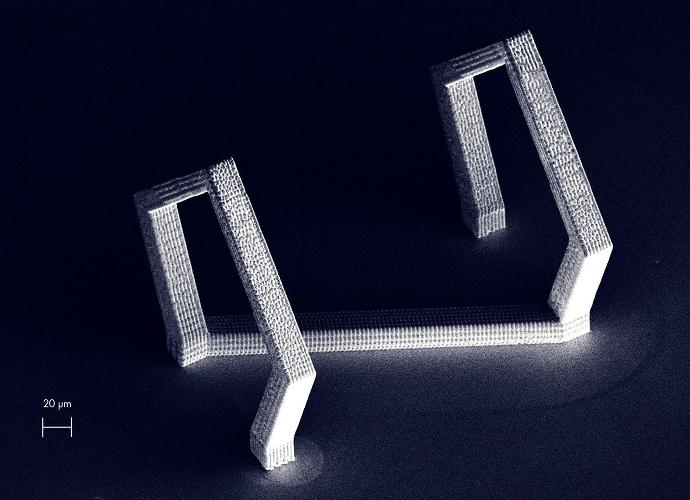New IEEE paper demonstrates use of Exaddon's technology for microscale mmWave structures
A research collaboration between Exaddon, Goethe University, and Ferdinand-Braun-Institut, published in IEEE Transactions on Electron Devices, demonstrates how Exaddon’s additive micromanufacturing (μAM) was used to fabricate microscale helices for use in travelling-wave tubes (TWTs), a crucial component for the realization of 5G networks.
The Need for mmWave in 5G Networks
The modern-day desire for unlimited communication and access to information brings with it an ever-increasing demand for bandwidth, and this requires use of 5G infrastructure in order to be realized. The 5G market still has a long way to go before it realizes its full potential, and market experts IDTechEx forecast that revenue generated by consumer mobile services will total $840 billion by the end of 2033.
Though 5G promises extremely fast data rates and low latency, there are real technical challenges to overcome. First off, high frequency wave bands are needed to transmit the data. Whilst use of high frequency/short wavelength bands like mmWave (24 - 100 GHz) allow for higher data throughput, high frequencies require tiny components, and these are very difficult to manufacture using standard methods.
Overcoming the Limitations of Standard Manufacturing Methods with μAM
Power amplifiers such as TWTs have long been used to limit transmission losses in many fundamental applications, yet the increase in operating frequencies necessary for 5G propagation requires minute object dimensions, often leading to manufacturing difficulties, or mechanical instabilities.
The combined team introduce additive micromanufacturing as a valid means to produce microscale slow wave structures (SWS), allowing for “flexibility of manufacturing well beyond the standard approach”.
The unique method of 3D printing used by Exaddon’s CERES print system resulted in helices with hard and dense metal properties with excellent conductivity and good surface quality. The achieved copper conductivity is comparable with the conductivity of bulk copper in the millimeter frequency range.

Promising Study Results Pave Way for Further Investigation
Helical structures are commonly used in TWTs due to their high interaction impedance. However, prior research has found that overcoming frequencies of 50-60 GHz is complicated due to fabrication difficulties and the mechanical instability of such tiny helices [1].
In this study, Exaddon’s μAM technology allowed for the 3D printing of helices beyond the current limit of manufacturing, enabling operating frequencies at 66 GHz – ideal for use in telecommunication systems [2].
“Simulations showed how the 3-D printing technique can be used to realize TWT amplifiers that can operate around 66 GHz with a linear gain of about 30 dB and a 1-dB bandwidth of 5.3 GHz.”
The results of this study point toward use of μAM as a valid means of overcoming the existing limitations of standard manufacturing methods for microscale slow wave structures. The possible geometries and excellent material properties of the printed objects offer an exciting avenue for use of Exaddon's μAM technology within the mmWave/5G arena.
[2] J. Kim et al., “MIMO-supporting radio-over-fiber system and its application in mmWave-based indoor 5G mobile network,” J. Lightw. Technol., vol. 38, no. 1, pp. 101–111, Jan. 1, 2020, doi: 10.1109/JLT.2019.2931318.
3D Printed Copper Helix for mmWave 5G Networks